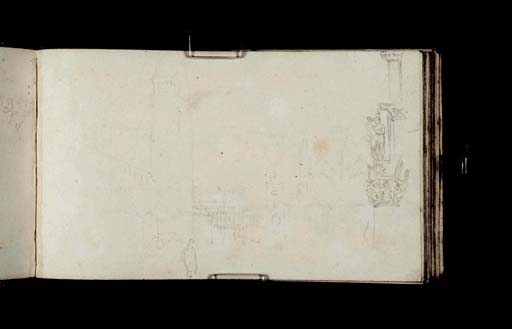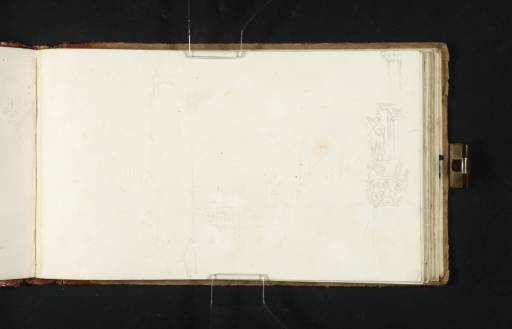Joseph Mallord William Turner The Piazzetta, Venice, with the Campanile and Basilica of San Marco (St Mark's); the South-Western 'Fig Tree' Corner of the Palazzo Ducale (Doge's Palace) 1819
Image 1 of 2
-
 Joseph Mallord William Turner, The Piazzetta, Venice, with the Campanile and Basilica of San Marco (St Mark's); the South-Western 'Fig Tree' Corner of the Palazzo Ducale (Doge's Palace) 1819
Joseph Mallord William Turner, The Piazzetta, Venice, with the Campanile and Basilica of San Marco (St Mark's); the South-Western 'Fig Tree' Corner of the Palazzo Ducale (Doge's Palace) 1819 -
 Joseph Mallord William Turner, The Piazzetta, Venice, with the Campanile and Basilica of San Marco (St Mark's); the South-Western 'Fig Tree' Corner of the Palazzo Ducale (Doge's Palace) 1819 (Enhanced image)Enhanced image
Joseph Mallord William Turner, The Piazzetta, Venice, with the Campanile and Basilica of San Marco (St Mark's); the South-Western 'Fig Tree' Corner of the Palazzo Ducale (Doge's Palace) 1819 (Enhanced image)Enhanced image
Joseph Mallord William Turner,
The Piazzetta, Venice, with the Campanile and Basilica of San Marco (St Mark's); the South-Western 'Fig Tree' Corner of the Palazzo Ducale (Doge's Palace)
1819
Joseph Mallord William Turner 1775–1851
Folio 51 Verso:
The Piazzetta, Venice, with the Campanile and Basilica of San Marco (St Mark’s); the South-Western ‘Fig Tree’ Corner of the Palazzo Ducale (Doge’s Palace) 1819
D14412
Turner Bequest CLXXV 51a
Turner Bequest CLXXV 51a
Pencil on white wove paper, 112 x 185 mm
Accepted by the nation as part of the Turner Bequest 1856
References
1909
A.J. Finberg, A Complete Inventory of the Drawings of the Turner Bequest, London 1909, vol.I, p.513, CLXXV 51a, as ‘The Campanile of St. Mark’s, with part of the Doge’s Palace (with figure of Eve and Serpent)’.
1930
A.J. Finberg, In Venice with Turner, London 1930, pp.34, 164, as ‘The Piazzetta from the Fig Tree angle of the Ducal palace. Only a beginning’.
Finberg subsequently annotated his 1909 Inventory entry (‘The Campanile of St. Mark’s, with part of the Doge’s Palace (with figure of Eve and Serpent)’): ‘looking twds Camp[...] & Procuratie’.1 In another copy, he wrote ‘Camp Clock Tower St Marks Ducal Pal’.2 Inverted relative to the sketchbook’s foliation, the view is north-north-west up the centre of the Piazzetta, with the Biblioteca Marciana (Libreria Sansoviniana) and campanile of St Mark’s on the left, the Torre dell’Orologio (clock tower) at the north-eastern corner of the Piazza San Marco (St Mark’s Square) beyond, and the south-western corner of the Basilica of San Marco on the right. There is a similar view, albeit in much more detail, from a few steps to the west on folio 45 recto (D14399), which Turner presumably felt sufficiently similar to avoid repetition here.
On the right is a new subject, the nearby south-western ‘Fig-tree angle’ (as John Ruskin later called it3) of the Palazzo Ducale (Doge’s Palace), seen to the north-west from the Molo; Eve is sculpted in high relief pointing to the forbidden fruit above the massive capital of the ground-floor arcade and below the corner pillar of the balcony. The coils of the Serpent around the almost free-standing, heavily undercut tree which simultaneously covers Eve’s modesty with foliage are indicated, but the matching figure of Adam is out of sight round the corner, facing the Piazzetta. See the entry for a drawing of a woman entwined directly with a snake in the Windmill and Lock sketchbook of about 1808–11 (Tate D07961; Turner Bequest CXIV 2) for other instances of Turner’s interest in mythological and religious serpents.
Finberg perhaps somewhat harshly judged this typically assured if functional summary of complex detail as ‘a bad drawing of the capital of the pillar of the Doge’s place at the Fig-tree angle, and a worse one of the figures of Eve and the Serpent above it’.4
Matthew Imms
March 2017
Undated MS note by A.J. Finberg (died 1939) in interleaved copy of Finberg 1909, Tate Britain Prints and Drawings Room, I, p.513.
Undated MS note by Finberg in copy of Finberg 1909, Tate Britain Prints and Drawings Room, I, p.513.
How to cite
Matthew Imms, ‘The Piazzetta, Venice, with the Campanile and Basilica of San Marco (St Mark’s); the South-Western ‘Fig Tree’ Corner of the Palazzo Ducale (Doge’s Palace) 1819 by Joseph Mallord William Turner’, catalogue entry, March 2017, in David Blayney Brown (ed.), J.M.W. Turner: Sketchbooks, Drawings and Watercolours, Tate Research Publication, July 2017, https://www

